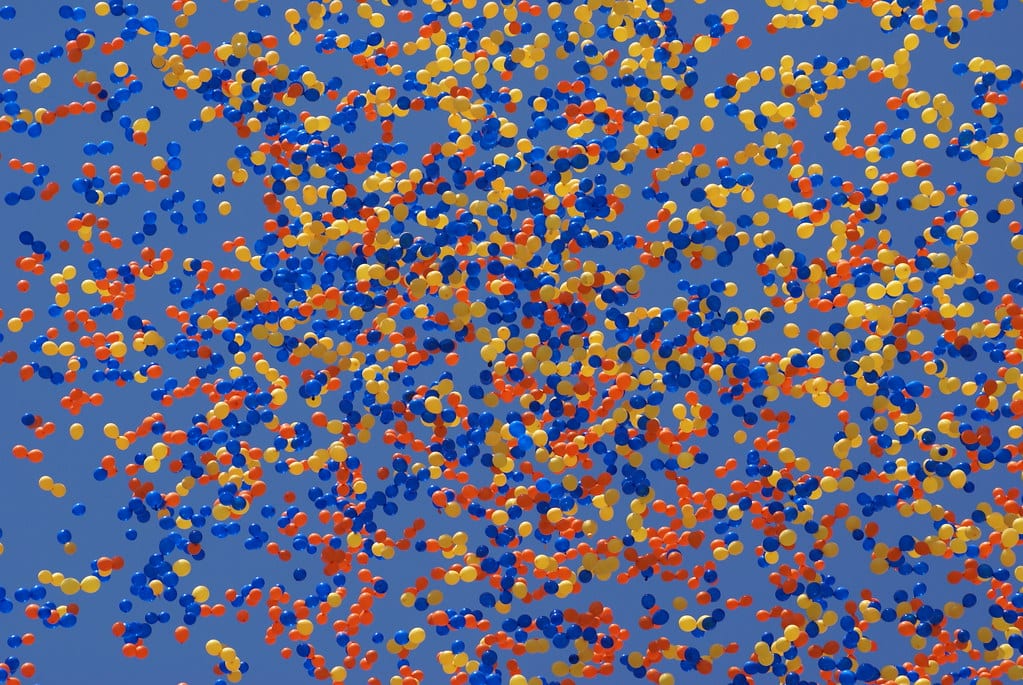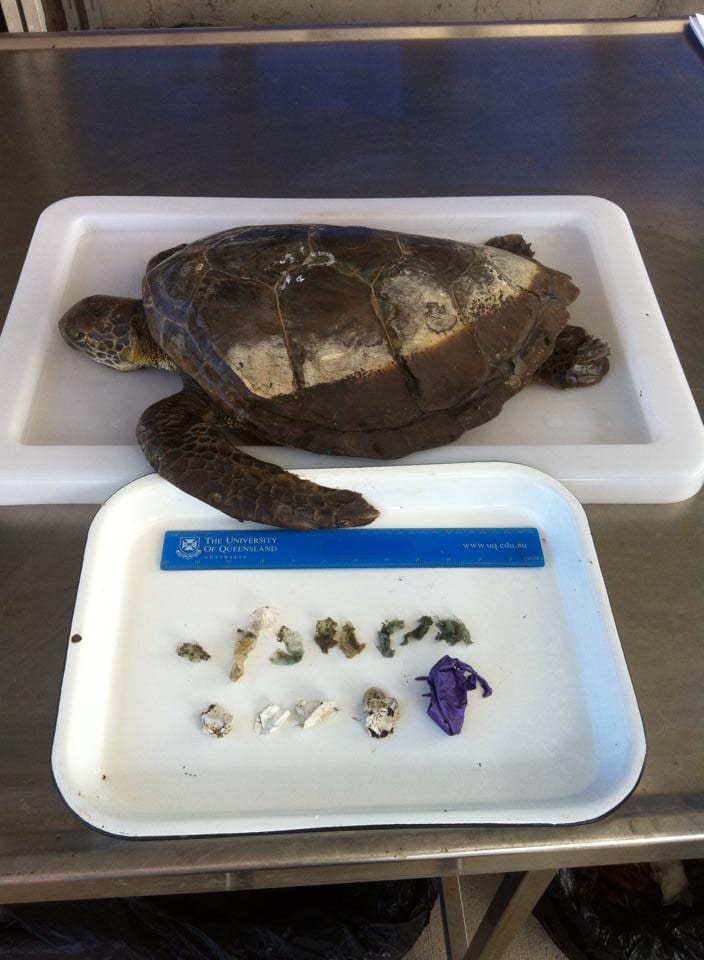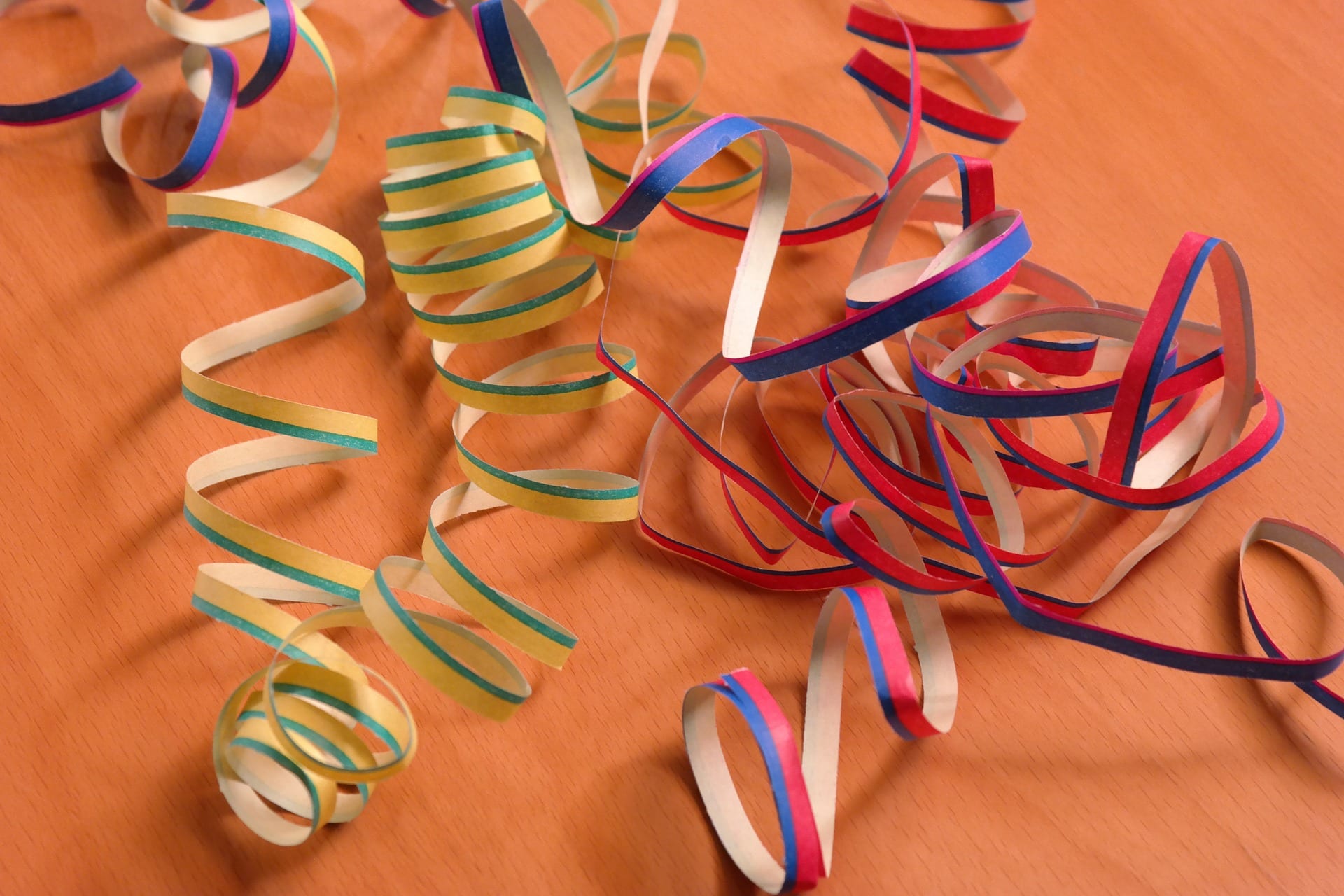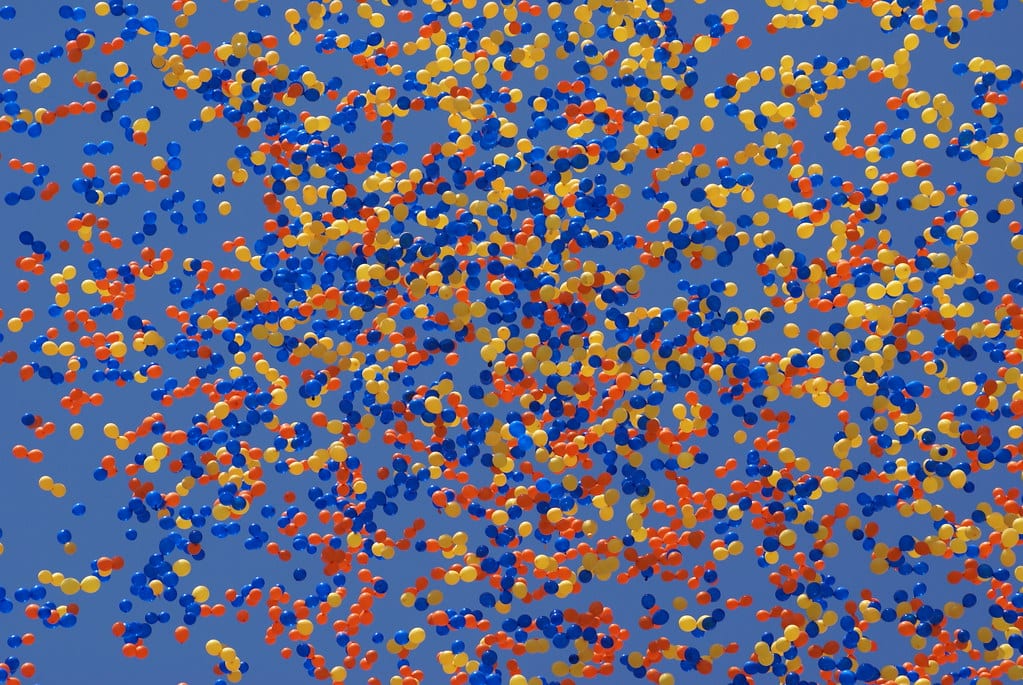Somehow, releasing balloons en masse became a way to mark special occasions, from prayer gatherings to the starts of races. Balloon releases may have been inspired by the Chinese tradition of sky lantern ceremonies, which were quiet, solemn ways to acknowledge the passing of loved ones or other prayerful occasions.
But while sky lanterns are usually made of paper and bamboo and float down in a short time, helium balloons sail high and far away.
A gazillion balloons carried in the wind are pretty to watch and certainly can add buoyancy to the spirit…

Photo Credit: Flickr, Jerry Downs, CC BY-ND 2.0
But unfortunately, this cheerful sight portends an oncoming disaster for the environment.
Balloons waste is especially hard on wildlife. Sea animals, like turtles, pelicans, whales, as well as forest-dwellers, frequently come in contact with deflated balloons and string. Turtles may think a deflated balloon is a tasty jellyfish, while a seabird might see it as a fish to be snatched up.
Either way, they’re both wrong – and their errors can be deadly.
Not too long ago, a sperm whale corpse washed up on the beach of a resort town in Spain. An autopsy showed the whale had ingested 64 pounds of garbage, including plastic. This incident highlighted how polluted the earth’s waterways are, how clogged with waste. Though it may not seem an obvious effect of joyously sending some balloons soaring, marine life is dying because of what we do without considering the consequences.
People who patrol beaches and shoreline report finding sea turtles and birds tangled in balloons and ribbons. Some of these animals are rescued and cleaned up for rehabilitation and eventual release. Others are already dead.

Photo Credit: Pam Bedsole
Along with plastic bags and fishing nets, balloon are classed by the Ocean Conservancy as one of the three deadliest litter types.
Nick Mallos, Trash Free Seas’ program director for Ocean Conservancy, told The Dodo, “It’s not uncommon for sea turtles to be found emaciated, sick or dead, only to find out later after X-rays or a necropsy that they’ve ingested a balloon.”
His team often finds balloon fragments and string inside the GI tracts of turtles.

Photo Credit: Kathy Townsend, Turtles in Trouble April 2014
Even if the balloons are released many miles inland, they are often carried out over water where they burst or float down. Mallos said balloons released in the U.K. have reportedly been found as far away as Hong Kong and Australia.
But, like the balloons, information about how celebrations that literally call for releasing garbage into the environment has traveled to faraway places. Cities and towns all over the U.S. and other countries are banning balloon releases in favor of less impactful commemorations. Colorful streamers or paper spheres can be released and cleaned up afterward. And even if they floated away and out of reach, they would biodegrade fairly quickly.

Photo Credit: Pixabay
Other alternatives are banners, kites or bunting.
To learn more about keeping balloons and other trash out of the sky, forests and waters, visit Ocean Conservancy and South Florida-based Balloons Blow.
Maybe do something a little more environmentally friendly for your kid’s next birthday party? Just a thought.






